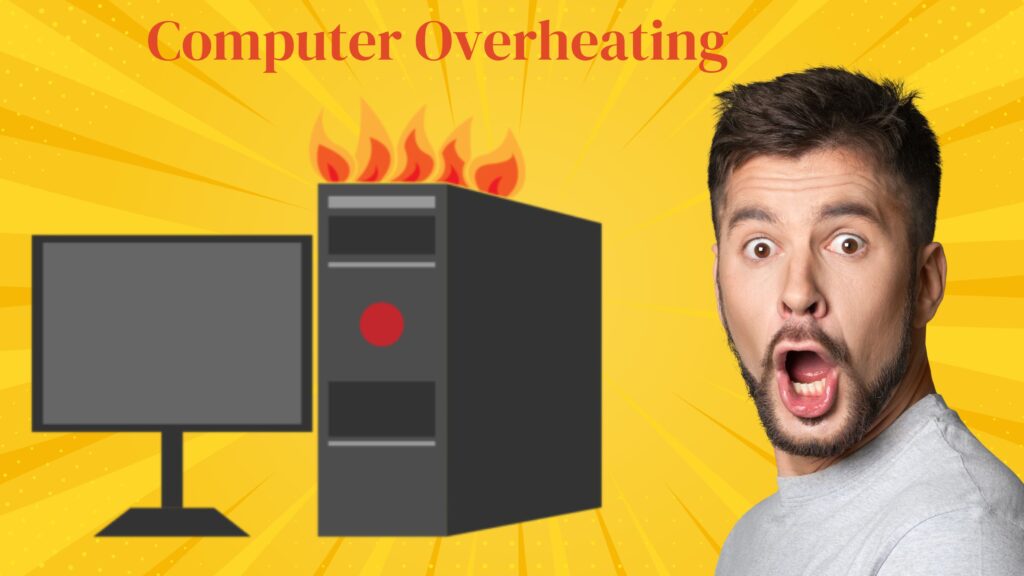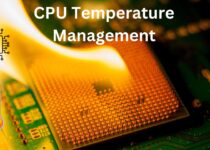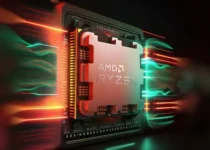Understanding and Preventing Computer Overheating: The Ultimate Guide
The heat generation in electrical equipment is within acceptable limits, as dictated by the laws of physics. However, when the temperature becomes excessively high, then the issue will develop.
A computer, being an electronic device, naturally experiences heat dissipation during operation. Today, I will guide you through the process of identifying and resolving an overheating PC, including its causes and symptoms.

Computer overheating refers to the excessive rise in temperature of a computer system beyond its normal operating range. Overheating occurs when the PC temperature surpasses 80°C (194F) or higher. The addition of additional CPU fans to the CPU casing will effectively resolve the issue of overheating. Additionally, please rectify the defective ones.
The maximum sustainable temperature is 80°C. However, the temperature might fluctuate by up to +/- 5°C across different computers due to several factors such as the brand’s endurance, dust accumulation, and usage patterns.
What are the indicators of computer overheating?
Monitor the processor’s temperature to determine the appropriate course of action. Retrieve the app “Core Temp” onto your personal computer and proceed with its installation. The application will provide you with a precise measurement of your processor’s temperature. If the temperature of the processor reaches or above 90°C, it indicates that your computer is experiencing overheating.
Symptoms of an overheating computer
When a computer becomes excessively hot, it will exhibit the following symptoms.
- Unexpected shutdown – The computer can shut down spontaneously without any input or directives from the user.
- A persistent Blue Screen of Death is displayed on your screen.
- PC freezing occurs sporadically due to overheating.
- The application terminates spontaneously — Work disruption may arise when the application abruptly terminates.
- The monitor screen is experiencing instability. The monitor exhibits arbitrary lines on the screen.
What are the causes that contribute to computer overheating?
As computers age, they tend to generate more heat. However, even a newly purchased computer will experience increased temperature when the processor is overloaded with memory-intensive operations. Overheating arises when the internal cooling system of the PC fails to efficiently expel the hot air generated by the electrical components responsible for computer processing.
Heat is an unavoidable consequence of all electrical machinery, including computers. State-of-the-art computers can generate a significant amount of thermal energy. If the computer’s heat management system, including its fans, heatsinks, and vents, can adequately regulate the temperature, then there should be no issue.
Now, let us examine some of the prevailing causes for a computer to experience excessive heat:
Demanding Applications
Intensive programs can deplete the capacity of the CPU or GPU, resulting in the components becoming excessively hot.
Several Concurrently Open Browser Tabs
Each active browser tab consumes resources that can contribute to overheating.
Inoperative Applications
When applications and processes experience a crash or freeze, your personal computer exerts significant effort to resolve the mistake, consuming a substantial amount of energy and memory in the process.
Overlocking
The cooling systems of a computer are specifically built to meet the requirements of its standard performance and may not be adequate for hardware that has been overclocked.
Malfunction Of The Fan
Computer cooling systems utilize fans to manage thermal energy. Malfunctioning fans might result in hazardous overheating due to hardware problems.
Obstructed Air Ducts
If the air vents are impeded or clogged, the dissipation of hot air will be hindered, resulting in the accumulation of heat and a significant increase in the internal temperature of your machine.
Obsolete Software
Defective, obsolete software can have a significant energy effect, and older operating systems may be inadequately adapted for gaming and other demanding tasks.
Direct Sunlight
Sunlight that is not obstructed or diffused by any objects or surfaces.
Operating your computer in direct sunlight or high-temperature conditions might lead to overheating. The cooling system is specifically engineered to manage the heat generated by internal components, although it can be overburdened by external environmental conditions.
Viruses Or Other Malicious Software
If your computer appears to be overheating without any apparent cause, a computer virus may be utilizing resource-intensive background activities. Employ robust antivirus software to eliminate any form of infection.
Methods To Prevent Computer Overheating
If your personal computer is experiencing overheating, it is crucial to promptly take action to avoid potential data loss or irreversible harm to the hardware. Exhausted fans will rapidly deplete the battery of your laptop. Ensuring consistent core temperatures is crucial for the prolonged functionality of your battery and other internal components.
To mitigate the issue of your computer overheating, it is advisable to take these measures to restore optimal temperature levels and prevent any subsequent shutdowns or performance degradation:
Verify The Functionality Of The Fans
The internal components of a computer produce a significant amount of heat, particularly during prolonged usage. If the fans inside your computer are functioning correctly to regulate temperatures, this issue should not be a concern.
However, if your computer fan frequently emits a loud noise, there are various straightforward methods to verify its effective functioning:
- Upon powering up your personal computer, you should perceive the audible sound of the fans commencing their rotational movement.
- Position your hand near the computer’s fan grille and detect any vibrations.
- Verify the operation of the fans by employing a flashlight to observe any motion through the fan grille.
If your fans are persistently emitting a buzzing sound, it could be necessary to consider replacing or upgrading your hardware by installing heat sinks to absorb excessive heat. Alternatively, you could opt for an external PC cooler to assist in regulating temperatures.
Improve airflow for your Desktop PCs
Even if the fans are functioning optimally, your computer can still experience overheating if there is not a consistent flow of cold, unpolluted air moving. To maintain clear airflow, it is advisable to position your PC on a level and rigid surface, ensuring that there are no obstructions in its vicinity.
Avoid attempting to enhance ventilation by dismantling side panels or other components of your computer’s housing, as this will modify the internal pressure, hence exacerbating the challenge for the fans to sustain adequate airflow. Additionally, it will facilitate the accumulation of dust, fluff, and other debris within your machine, exacerbating the situation.
Enhance the circulation of air for your laptop
Ensuring proper ventilation is essential due to the proximity of a laptop’s internal components. Placing your laptop straight on a blanket or sofa will obstruct ventilation as the vents are typically located at the bottom. Position your laptop on a level and rigid surface, such as a table or even a book.
If you are using a laptop protective case, it may obstruct the air vents. In such instances, it is advisable to remove the case. To maintain optimal temperature for your laptop, it is advisable to refrain from using it in high-temperature surroundings or exposing it to direct sunlight. If you lack access to a room that is adequately shaded or air-conditioned, consider acquiring a laptop cooling pad that directs cold air upwards, ensuring proper ventilation for your device.
Refrain from utilizing software applications that consume a significant amount of CPU resources
Increasing the workload on your computer’s CPU results in a proportional increase in the amount of heat it produces. When a system is excessively burdened for extended durations, temperatures can rapidly rise, resulting in 100% disk use as virtual memory is generated on the hard drive to handle the heightened workload.
To alleviate CPU strain, access Task Manager by pressing Ctrl + Shift + Esc and examine the applications displayed in the CPU column. If any processes are utilizing a significant portion of the CPU, simply right-click on them and choose the option “End task” to terminate them.
Overclocking the CPU can effectively maximize performance, but it also produces additional heat that may exceed the machine’s thermal capacity. To decrease the temperature of your CPU, it is advisable to revert the clock speed to its default setting, or you may want to contemplate gradually reducing the clock speed of your system. Similarly, this principle applies to the act of overclocking your GPU, RAM, or any other computer components.
Minimize superfluous browser tabs and programs
Engaging in multitasking with multiple applications open can lead to excessive heat generation in your CPU. To maintain optimal temperatures, it is advisable to reduce the number of running processes and close any unnecessary programs entirely. To save disk space and minimize system overheating, it is advisable to uninstall superfluous applications and eliminate possibly undesirable programs.
Similarly, maintaining a large number of open tabs on your web browser can significantly deplete your computer’s resources. Close any inactive tabs and bookmark tabs that you may need to access again. Certain web browsers, like Avast Secure Browser, possess integrated features that enable you to detect and close tabs that utilize excessive power and memory.
Perform a thorough cleaning and removal of dust from your PC
Over some time, particulate matter such as dirt and dust will gather in the ventilation ducts of your computer, obstructing essential parts, diminishing the flow of air, and leading to excessive heat generation. Regularly dusting your PC will improve its cooling and reduce noise levels.
To effectively clean the internal components of your desktop computer, ensure that you have cotton swabs and a can of compressed air readily available. Then, proceed to follow these instructions:
- Ensure that you fully power off your computer and disconnect all of its cords and cables.
- Position your PC on a pristine, level, and adequately illuminated work surface.
- Delicately extract the outer covering.
- Utilize the canister of compressed air to remove dust and debris from the fans, ducts, and other components.
If obstructions persist in confined areas, employ cotton swabs to delicately eliminate them.
It is important to keep in mind that unnecessary files and unnecessary software also hurt the performance of your system and might cause it to overheat. Enhance the efficiency of your system by utilizing reliable cleaning software that can automatically remove unnecessary temporary files, ensuring your PC remains optimized for efficient and speedy operation.
Apply thermal paste again
Thermal paste is a thermally conductive substance typically applied to components like the CPU and GPU to enhance heat transfer. Thermal paste enhances heat dissipation and safeguards against the occurrence of too high temperatures within your device.
However, thermal paste is subject to degradation and gradually loses its effectiveness over time. Utilizing a thermal paste removal kit to eradicate previous compounds before reapplying a new layer of paste might enhance the efficiency of your computer’s cooling system.
Modify the internal configurations of your computer
If your computer appears to be overwhelmed by regular usage, attempt to recalibrate the settings of your PC to decrease the strain on its resources and minimize overheating. Initiating power saving mode is an effective initial step, but you can further optimize performance and economy by adjusting additional parameters like screen brightness and resolution to achieve an optimal balance.
Perform a scan to detect and eliminate any viruses and malware
Viruses and other forms of malware can execute resource-intensive tasks without your awareness, resulting in rapid overheating of your PC. Utilize a malware detection and elimination program to accurately identify and eradicate unwanted software from your personal computer.
Maintain the latest version of your program
Maintaining your PC’s up-to-date status with the newest operating system, drivers, and other software offers numerous advantages in terms of performance and security, while also aiding in the prevention of overheating. Furthermore, the latest upgrades address software defects and inefficiencies, resulting in enhanced speed and efficiency of your machine.
Utilize a specialized driver updater program to optimize the performance of your PC by automatically scanning and resolving issues with corrupted or outdated software, without requiring any manual intervention.
Power off your computer
Similar to humans, computers also require periodic intervals of rest. The most straightforward and dependable method to lower the temperature of a personal computer is to power it off and allow it to rest for some time. Upon restarting the device, it will experience the advantages of a cold start, resulting in a much-improved performance.
FINAL THOUGHTS
We trust that the information provided on this page will assist you in analyzing and resolving the issue of your computer overheating. If you have something you would want to share, please leave a remark.


